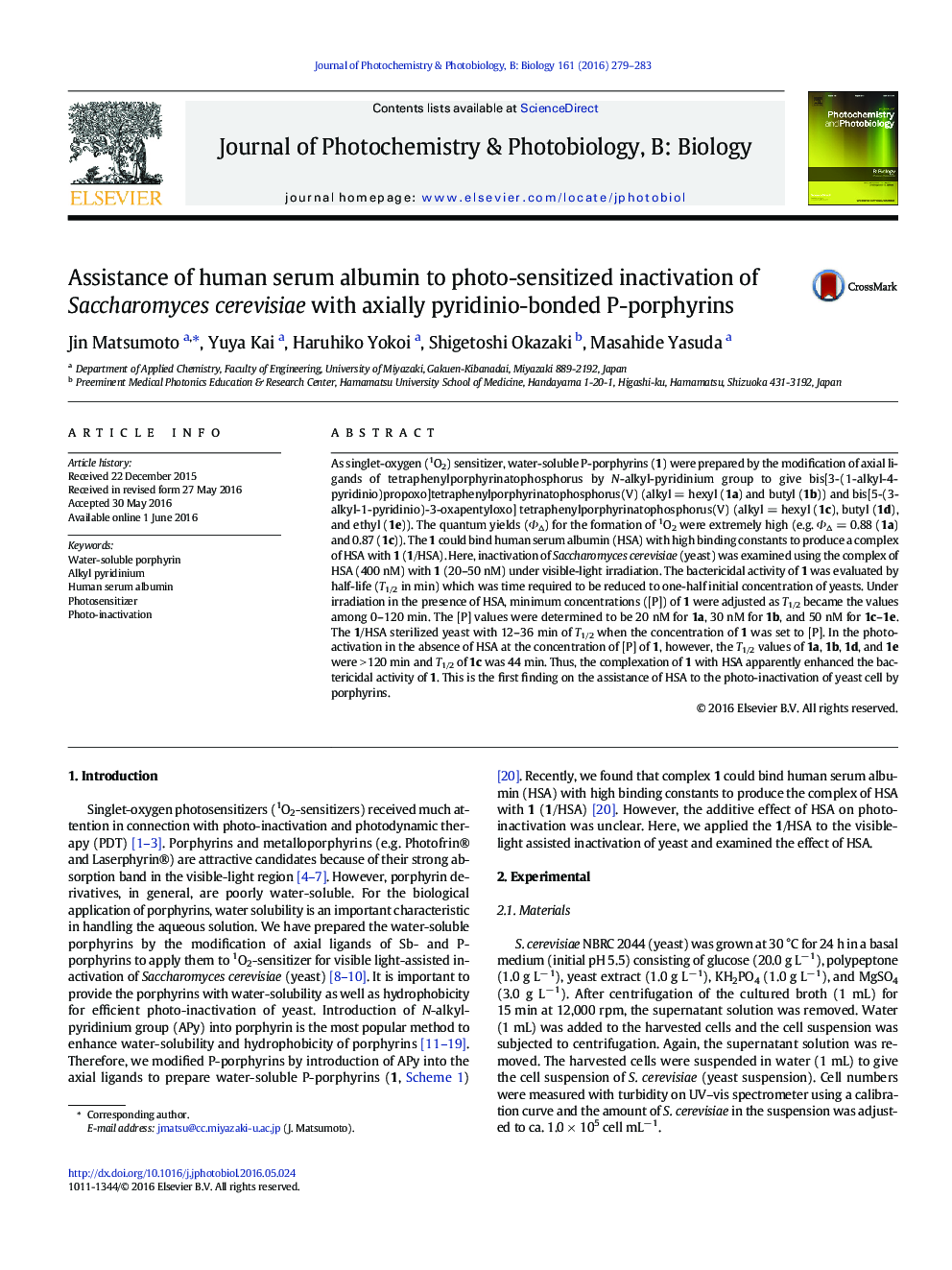| Article ID | Journal | Published Year | Pages | File Type |
|---|---|---|---|---|
| 6493681 | Journal of Photochemistry and Photobiology B: Biology | 2016 | 5 Pages |
Abstract
As singlet-oxygen (1O2) sensitizer, water-soluble P-porphyrins (1) were prepared by the modification of axial ligands of tetraphenylporphyrinatophosphorus by N-alkyl-pyridinium group to give bis[3-(1-alkyl-4-pyridinio)propoxo]tetraphenylporphyrinatophosphorus(V) (alkyl = hexyl (1a) and butyl (1b)) and bis[5-(3-alkyl-1-pyridinio)-3-oxapentyloxo] tetraphenylporphyrinatophosphorus(V) (alkyl = hexyl (1c), butyl (1d), and ethyl (1e)). The quantum yields (ΦÎ) for the formation of 1O2 were extremely high (e.g. ΦΠ= 0.88 (1a) and 0.87 (1c)). The 1 could bind human serum albumin (HSA) with high binding constants to produce a complex of HSA with 1 (1/HSA). Here, inactivation of Saccharomyces cerevisiae (yeast) was examined using the complex of HSA (400 nM) with 1 (20-50 nM) under visible-light irradiation. The bactericidal activity of 1 was evaluated by half-life (T1/2 in min) which was time required to be reduced to one-half initial concentration of yeasts. Under irradiation in the presence of HSA, minimum concentrations ([P]) of 1 were adjusted as T1/2 became the values among 0-120 min. The [P] values were determined to be 20 nM for 1a, 30 nM for 1b, and 50 nM for 1c-1e. The 1/HSA sterilized yeast with 12-36 min of T1/2 when the concentration of 1 was set to [P]. In the photo-activation in the absence of HSA at the concentration of [P] of 1, however, the T1/2 values of 1a, 1b, 1d, and 1e were > 120 min and T1/2 of 1c was 44 min. Thus, the complexation of 1 with HSA apparently enhanced the bactericidal activity of 1. This is the first finding on the assistance of HSA to the photo-inactivation of yeast cell by porphyrins.
Related Topics
Physical Sciences and Engineering
Chemical Engineering
Bioengineering
Authors
Jin Matsumoto, Yuya Kai, Haruhiko Yokoi, Shigetoshi Okazaki, Masahide Yasuda,
